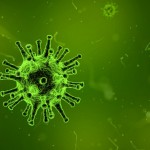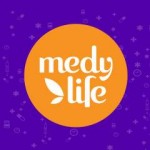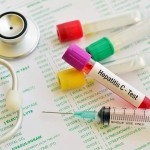Herpes Simplex Virus
Herpes simplex virus 1 and 2 (HSV-1 and HSV-2), are two members of the herpes virus family.
Herpes virus, generally infect humans . It clears up without treatment within 7-10 days. The herpes simplex virus (HSV-1) is usually responsible for cold sores.
In rare cases, cold sores can also be caused by the herpes simplex virus type 2 (HSV-2). This can be a result of having oral sex with someone who has genital herpes. The herpes simplex virus, is highly contagious and can be easily passed from person to person by close direct contact. After someone has contracted the virus, it remains dormant (inactive) for most of the time. Although the virus can be activated by certain triggers, resulting in an outbreak of cold sores. These triggers vary from person to person but can include fatigue, an injury to the affected area.
Symptoms
In children:
Mouth sores
Fever
Swollen and tender lymph glands are the most common symptoms.
These sores slowly heal over 7 to 14 days. However in adults, the symptoms are so mild that no one is even aware that an infection is present.
If genitals are affected: The herpes lesions are found on the penis, vagina, cervix, vulva, buttocks, or other nearby parts of the body.
As with the oral sores, someone with genital herpes may have repeated outbreaks over a lifetime. Herpes simplex viruses also cause encephalitis, an infection of the brain. Children with encephalitis have fever, headache, irritability, and confusion. Seizures are common. Herpes simplex type 2 often causes a mild form of meningitis that does not cause long-term problems or brain damage.
Recurrent infections: After initial herpes infection occurs and has run its course, the virus itself will remain in the nerve cells of his body in an inactive or dormant (latent) form. The infected person becomes the carrier of the herpes virus for life. At time virus may become active again resulting in cold, heat, fever, fatigue, stress, or exposure to sunlight, causing a return of a cold sore (secondary HSV infection). These outbreaks often begin with a tingling or itching sensation in the area where the sores are about to break out. The sores and blisters often become crusty before healing.
Causes
Herpes simplex is generally caused by the herpes simplex virus type 1 and type 2 (HSV-1,2).
Aggravating factors: Factors thought to trigger outbreaks of cold sores include:
Emotional upset or psychological stress
Tiredness and fatigue
An injury to the affected area
Menstruation
Strong sunlight
Diagnosis
The primary method of testing for the virus is:
The herpes culture
HSV DNA testing (Polymerase Chain Reaction). Though it is not as sensitive.
HSV antibody testing can be used to help diagnose an acute HSV infection. It is done by collecting the blood samples of the patient. The convalescent blood sample is collected several weeks after the acute sample, and HSV IgG antibody levels are compared to see if they have risen significantly, indicating a current infection.
Treatments
There is no way to eradicate herpes virus from the body, but antiviral medications can reduce the frequency, duration, and severity of outbreaks.
Pain killers like ibuprofen can reduce pain and fever.
Anti viral drugs like acyclovir, valacyclovir, famciclovir, and penciclovir. If used correctly, they may speed up the healing time of a recurrent infection.
Topical application of antiviral creams can also help in healing outbreak of infection. They do not get rid of the herpes simplex virus or prevent future outbreaks of cold sores occurring.
Complications
Infections caused by the cold sore virus are often mild and usually disappear without treatment. However, in sometimes, they can cause complications.
Dehydration: Dehydration is a lack of water in the body and it can sometimes occur as a result of the pain that is caused by a blister. It can be easy not to drink enough fluid if your mouth is painful. Young children with cold sores are particularly at risk of becoming dehydrated.
Herpetic whitlow (whitlow finger): Some time the virus may spread to other parts of the body. This is known as a secondary infection. Herpetic whitlow (whitlow finger) is a secondary infection of the cold sore virus that causes painful sores and blisters on and around fingers. It can occur when the cold sore virus comes into contact with a cut or graze on your hand and enters the skin. However, herpetic whitlow can be easily treated using antiviral medication.
Herpetic keratoconjunctivitis: Herpetic keratoconjunctivitis is a secondary infection of the cold sore virus that affects the eyes. If the virus comes into contact with eyes, it can cause inflammation (swelling and irritation) of eye area and sores to develop on eyelids. However, herpetic keratoconjunctivitis can usually be easily treated using antiviral medication available from a specialist eye doctor. If left untreated, herpetic keratoconjunctivitis can cause the cornea (the transparent layer at the front of your eye) to become infected, which can eventually lead to blindness.
Encephalitis: Encephalitis is a condition where the brain becomes inflamed and swollen. This can be very serious and it can cause brain damage and even death. In very rare cases, encephalitis can be caused by the virus spreading to the brain. It can be treated with intravenous injections of antiviral medications, such as acyclovir.
References:
CDC
NHS
U S National Library of Science
American Academy of Dermatology









